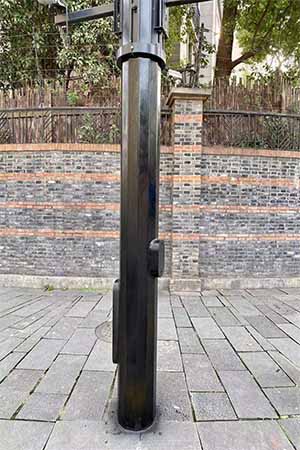Urban landscapes worldwide face a persistent challenge: graffiti vandalism and illegal stickers that mar public infrastructure, historical monuments, and private properties. From the spray-painted walls of European alleys to the adhesive-covered utility boxes in bustling Asian cities, the financial and aesthetic toll of these acts is staggering. Cities spend billions annually on cleanup efforts, while businesses grapple with recurring maintenance costs. Enter anti-graffiti coatings—a revolutionary solution that combines advanced material science with practical urban governance. Among these, the best anti-graffiti coating stands out as a game-changer, offering unparalleled protection, sustainability, and cost efficiency.
1. Why Traditional Solutions Fall Short
For decades, cities and property owners relied on reactive measures like chemical solvents, pressure washing, or manual scraping to remove graffiti. While these methods temporarily restore surfaces, they come with significant drawbacks:
- Surface Damage: Aggressive cleaning erodes paint, weakens materials, and accelerates aging.
- Environmental Harm: Harsh solvents release volatile organic compounds (VOCs), contaminating air and water.
- Recurring Costs: The average graffiti attack costs 150–150–500 to clean, with high-risk areas requiring weekly maintenance.
Anti-graffiti coatings flip this narrative by focusing on prevention rather than reaction. By creating an invisible barrier between surfaces and vandalism, these coatings make graffiti removal effortless and non-destructive. However, not all coatings are created equal. The best anti-graffiti coating must excel in four key areas: adhesion resistance, durability, eco-friendliness, and adaptability to diverse environments.
2. The Anatomy of the Best Anti-Graffiti Coating
The most advanced coatings leverage nanotechnology and polymer chemistry to achieve extraordinary performance:
A. Micro-Textured Surface Design
Inspired by the self-cleaning properties of lotus leaves, top-tier coatings feature nano-scale textured surfaces. These microscopic ridges reduce the contact area between adhesives or paints and the substrate by over 90%. Even if graffiti is applied, it adheres weakly and can be wiped off with minimal effort—no solvents required.
B. Multi-Layered Defense System
- Base Layer: A corrosion-resistant primer bonds tightly to metal, concrete, or wood.
- Functional Layer: Fluoropolymer-based matrix infused with ceramic nanoparticles ensures hardness (up to 9H pencil hardness) and UV resistance.
- Top Layer: A silicone-modified finish provides hydrophobic and oleophobic properties, repelling both water- and oil-based paints.
C. Extreme Environmental Resilience
The best coatings withstand temperatures from -40°C to 100°C.
D. Eco-Certified Formulations
Leading manufacturers prioritize sustainability. Water-based coatings with near-zero VOC emissions
The best anti-graffiti coating isn’t just a product—it’s a philosophy of proactive urban care. By reducing cleanup costs, preserving cultural landmarks, and curbing environmental harm, these coatings empower cities to focus resources on growth rather than damage control. As vandalism tactics evolve, so too must our defenses. With cutting-edge science and global collaboration, the battle for cleaner cities is one we can win—one protected surface at a time.
For municipalities, businesses, or homeowners seeking long-term solutions, investing in the best anti-graffiti coating isn’t an expense; it’s a commitment to a resilient, beautiful future.
